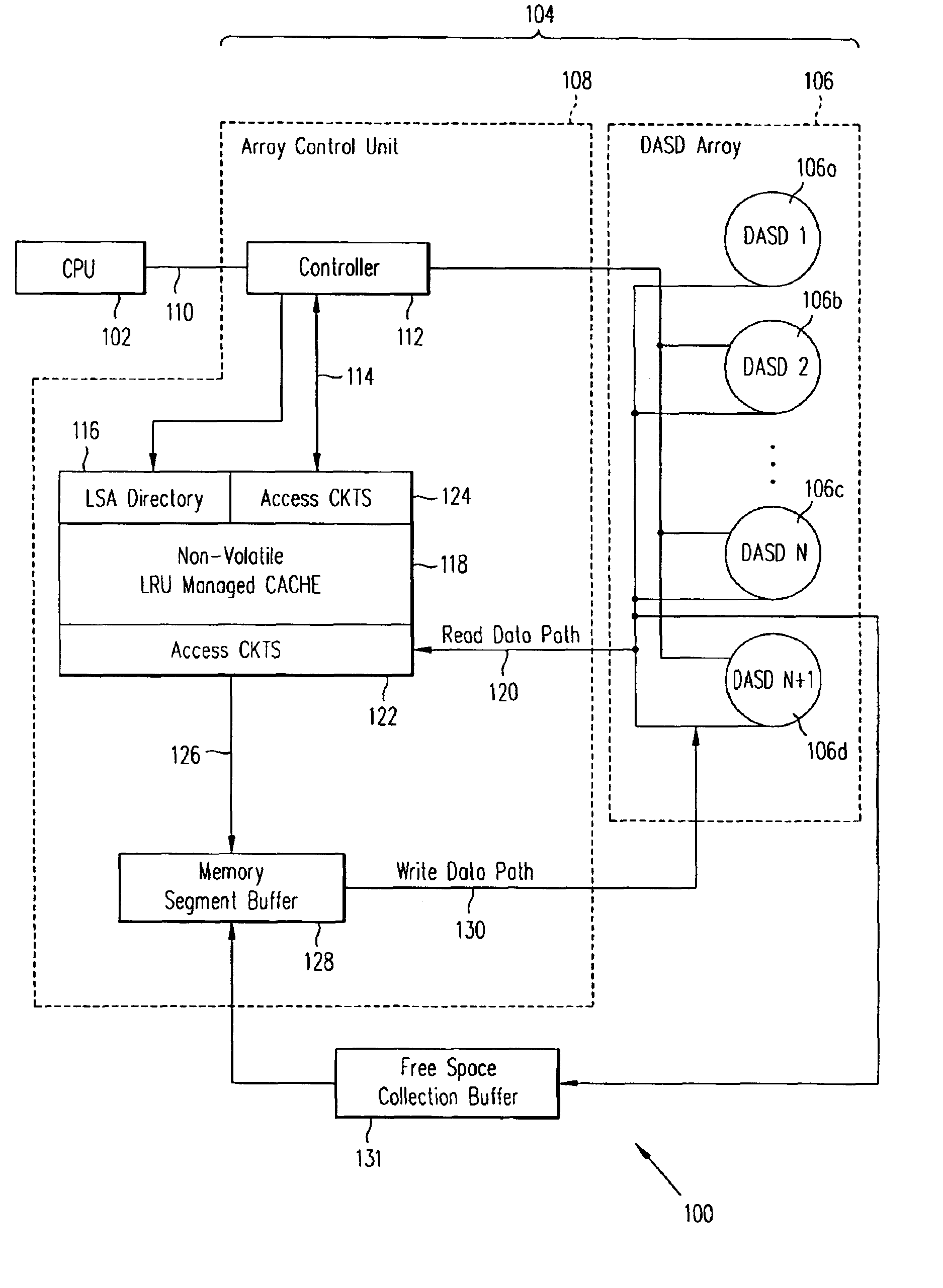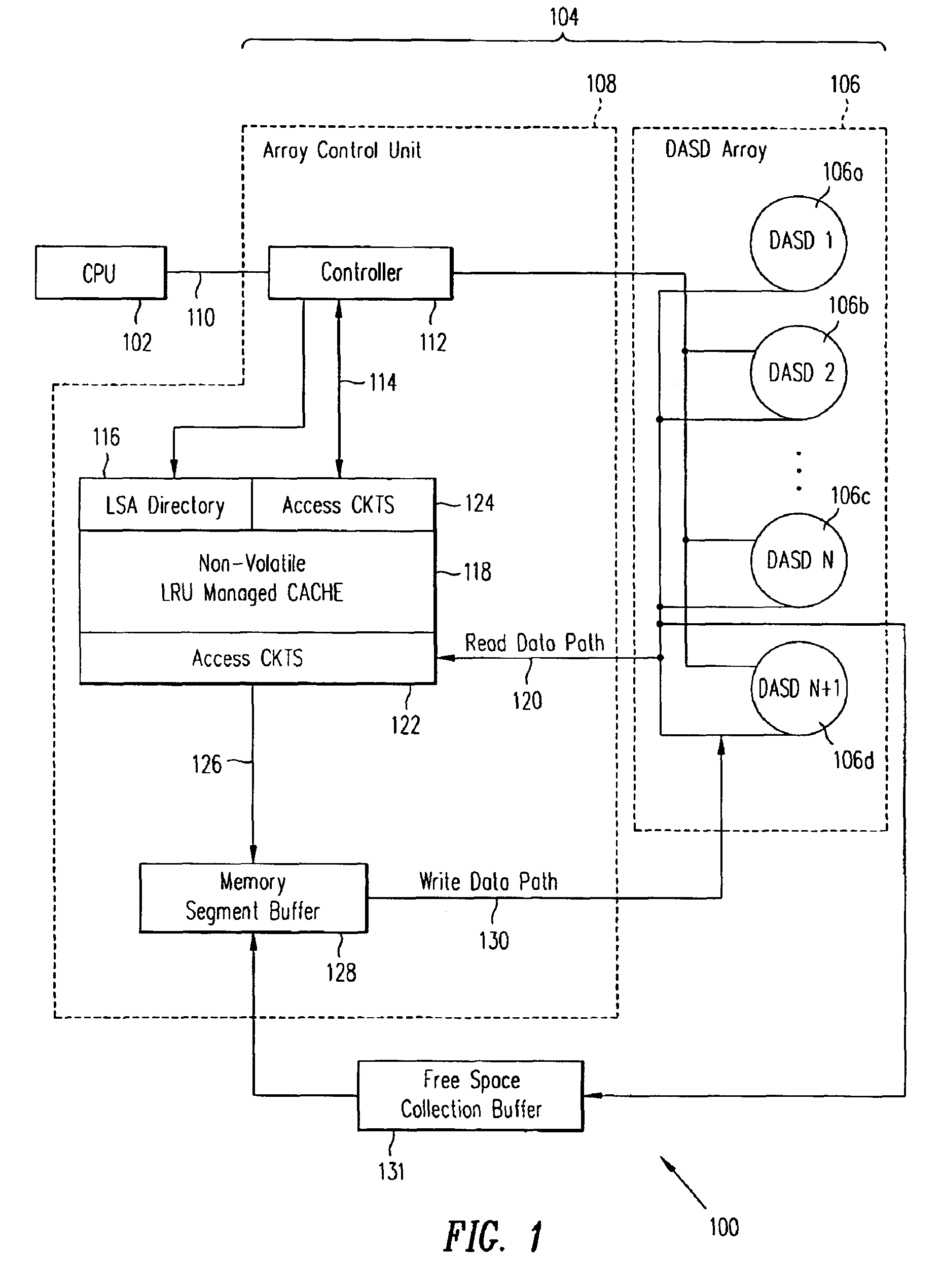Free space collection in information storage systems
a free space and information storage technology, applied in the field of information storage systems, can solve the problems of long time-consuming and laborious, inability to fit back into the space that had been allocated, and long time-consuming tie-up of free space, and achieve the effect of easy selection of a configuration for an unknown workload and good system performan
- Summary
- Abstract
- Description
- Claims
- Application Information
AI Technical Summary
Benefits of technology
Problems solved by technology
Method used
Image
Examples
Embodiment Construction
[0043]FIG. 1 shows a preferred embodiment of a computer system 100 constructed in accordance with the present invention. The system 100 includes a processor 102 or host computer that communicates with an external information storage system 104 having N+1 direct access storage devices (DASD) in which information is maintained as a log structured array (LSA). In FIG. 1, an array 106 comprising four DASDs 106a, 106b, 106c, and 106d is shown for illustration, but it should be understood that the DASD array may include a greater or lesser number of DASD. A control unit 108 controls the storage of information so that the DASD array 106 is maintained as an LSA. Thus, the DASD recording area is divided into multiple segment-column areas and all like segment-columns from all the DASDs comprise one segment's worth of data. The control unit 108 manages the transfer of data to and from the DASD array 106 so that periodically it considers segments for free space and selects target segments accor...
PUM
 Login to View More
Login to View More Abstract
Description
Claims
Application Information
 Login to View More
Login to View More - R&D
- Intellectual Property
- Life Sciences
- Materials
- Tech Scout
- Unparalleled Data Quality
- Higher Quality Content
- 60% Fewer Hallucinations
Browse by: Latest US Patents, China's latest patents, Technical Efficacy Thesaurus, Application Domain, Technology Topic, Popular Technical Reports.
© 2025 PatSnap. All rights reserved.Legal|Privacy policy|Modern Slavery Act Transparency Statement|Sitemap|About US| Contact US: help@patsnap.com



